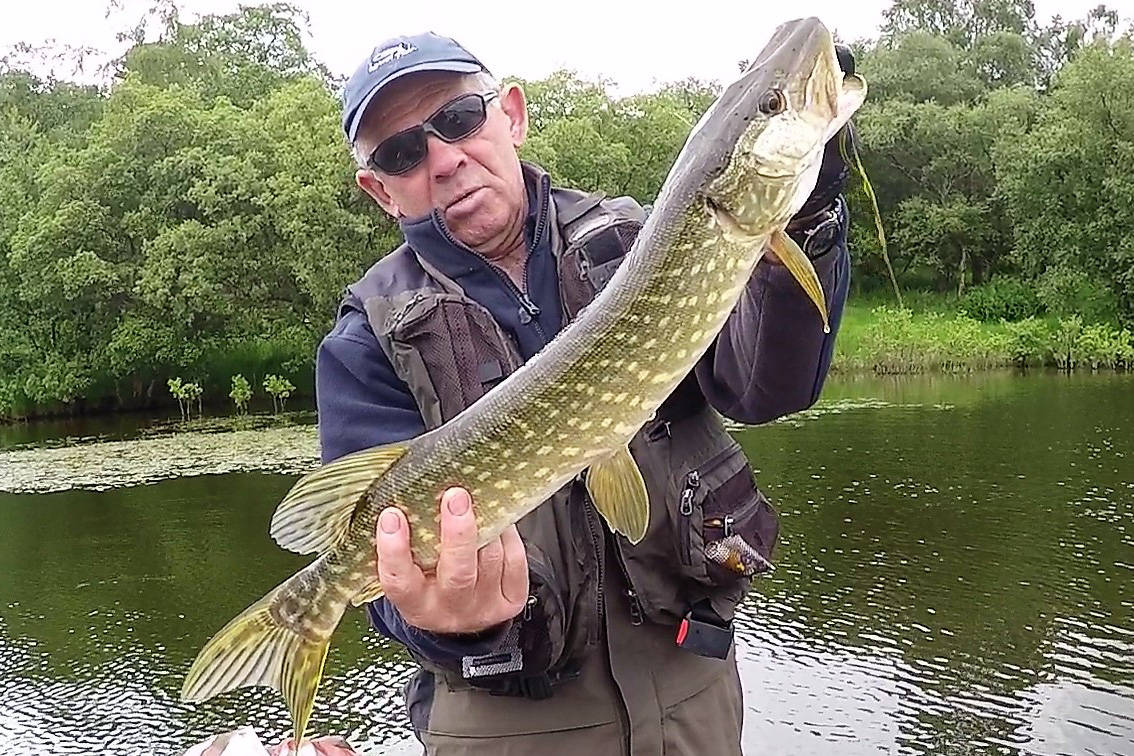A fish’s bite is often the most memorable part of the catch
The large fly with its red head and silvery mylar tail rested in a narrow gap between two floating weed beds no more than 30 feet from shore and less than a fly-rod’s length off the bow of our small boat. Moments before, I was bringing the fly in with slow strips about eight to 10 inches of line at a time. Then there was a silvery flash as a fish came out of the depths and grabbed the fly.
I felt the fly jerk to a halt, but only for a second. My hook set was late, and the fish went on its way. Or so I thought.
As I started to lift the rod’s tip for another cast, Ken Wood, my guide for the day, told me to leave the fly where it was. “He’ll be back,” he said with the quiet confidence of someone who had been there before. So I did as he said.
Underneath that red and silver fly, the water was semi clear but only for a foot or so. An algae bloom near the surface made the water a bit murky. Beyond that it grew steadily darker until there was no way of telling what might lurk below. If there were something in that darkness, an angler wouldn’t see it coming until the last second.
Against that background, the large and rather glitzy fly seemed out of place and resembled nothing that I could see. Earlier that morning I had asked Wood for its name, and his reply was somewhat surprising.
“We don’t name pike flies. Not like we do for trout patterns,” he said. “We just call them pike flies.”
So there I was, standing in the bow of a traditional Scottish fishing boat on a small lake south of Edinburgh waiting for a northern pike to come out of the dark and take my fly with no name.
I gave that glitzy fly a tug, just enough to give it some signs of life. Suddenly, a long shadow came from the darkness, passed slowly below the fly, then circled back for another look. The pike had returned just as Wood predicted and was now stalking its prey.
Then the fish abruptly turned and opened its mouth wide, exposing its full complement of teeth, and inhaled the fly. The battle was on.
Looking back on that adventure, there are two things that stand out the most, and both involve the taking of a fly by a hungry fish. I will never forget that moment when the pike circled a no-name fly and showed his teeth.
Through the years I have learned that each species of fish has its own way of eating the bait an angler casts in its direction. In some cases, as with largemouth bass, a fish might use a variety of bait-eating techniques depending on the day or the bait being offered. The bite might be subtle and hard to feel or it might be with enough ferocity to make one’s heart skip a beat.
On a recent outing to Lake Mead, I watched as a bass shot out from its hiding spot in a submerged bush to smack a skirted jig as it sunk toward the bottom. The take was fast and ferocious, and though the fish was on the small side, that taking moment was memorable.
Each one of us has our own reasons for spending time with a fishing rod in hand. Perhaps we think it’s to spend time with friends and family, relax in the outdoors, or simply to eat the fish we catch. However, if you listen to the fish stories your fellow anglers choose to share, my guess is that you will notice the focal point most often centers around that moment when the fish takes their bait. Everything after that builds on the story started with the take. Whether that take is subtle or unmistakable, it doesn’t matter.
Naturally, there are some moments of take that are more memorable than others, and that is part of the reason we keep coming back for more.
Freelance writer Doug Nielsen is a conservation educator for the Nevada Department of Wildlife. His “In the Outdoors” column is not affiliated with or endorsed by the NDOW. Any opinions he states in his column are his own. Find him on Facebook at @dougwritesoutdoors. He can be reached at intheoutdoorslv@gmail.com.






















